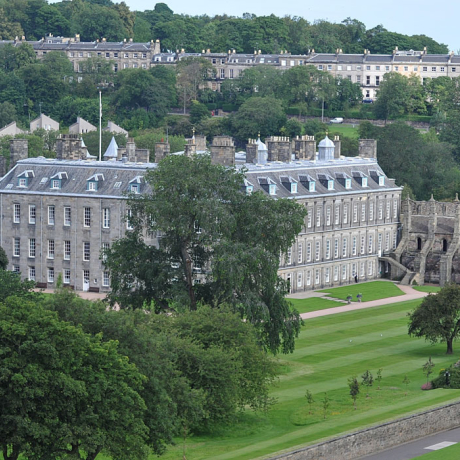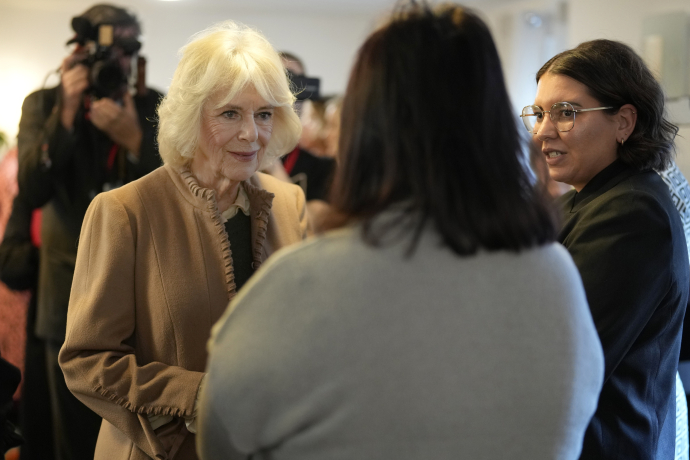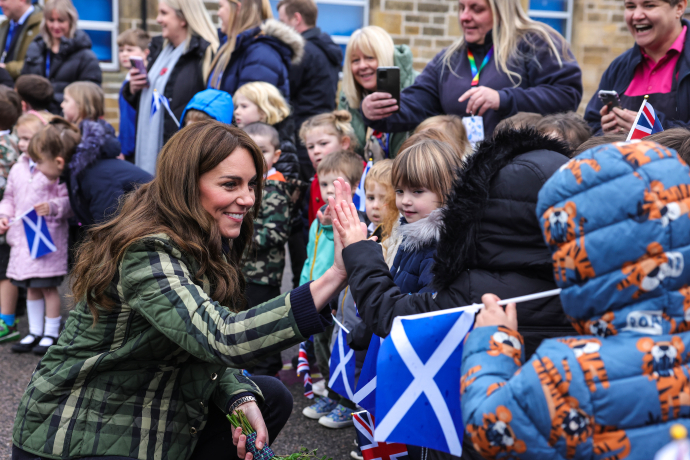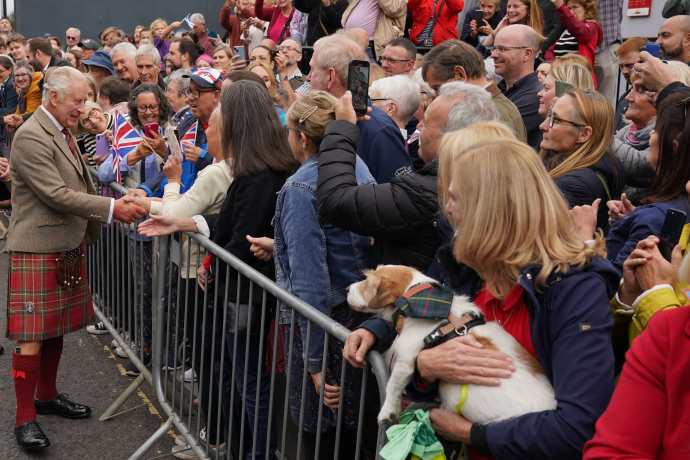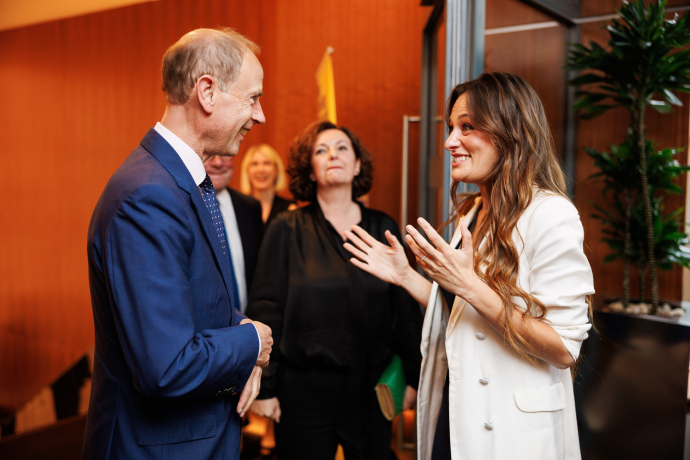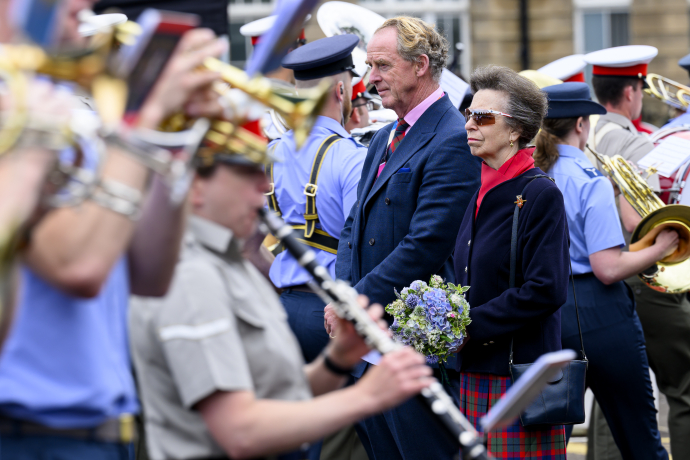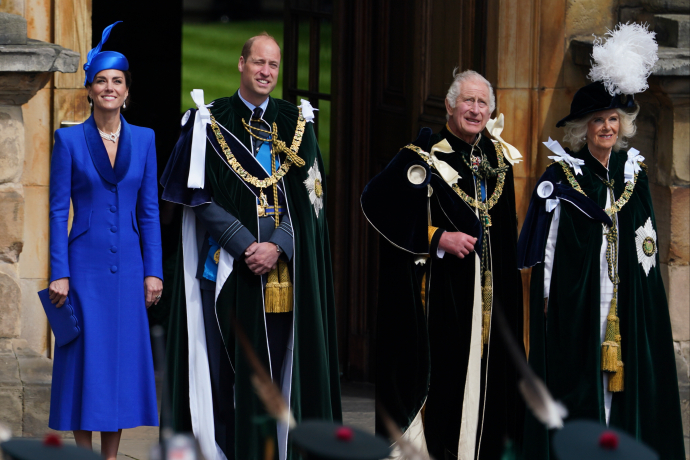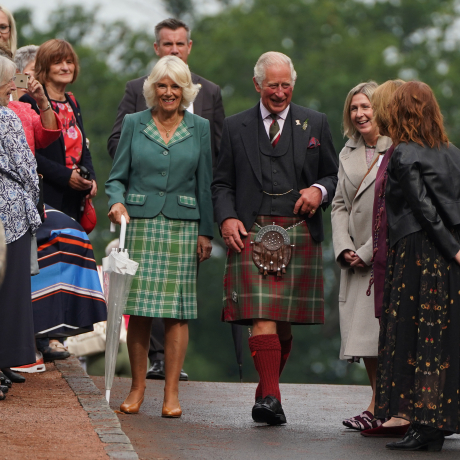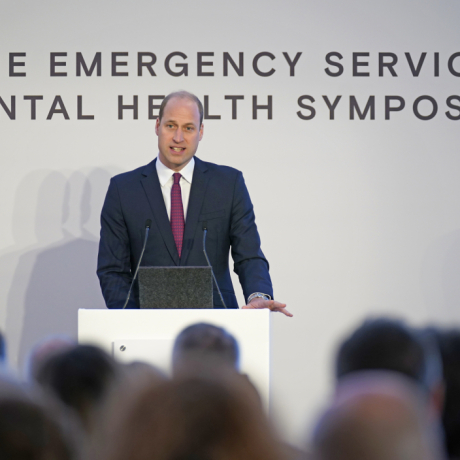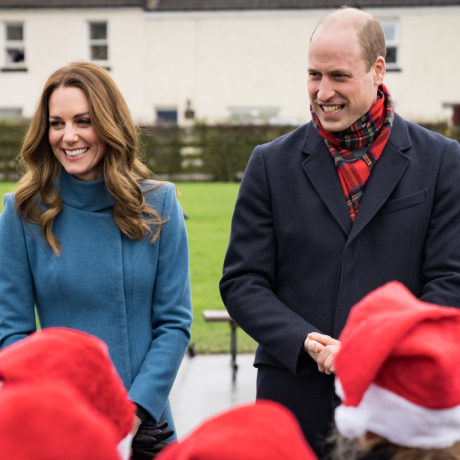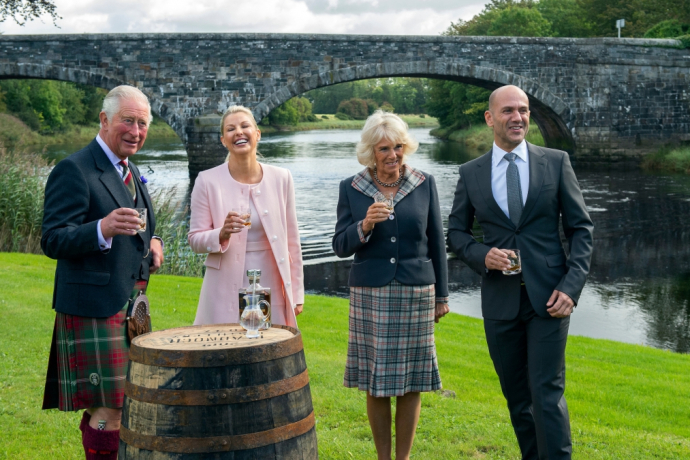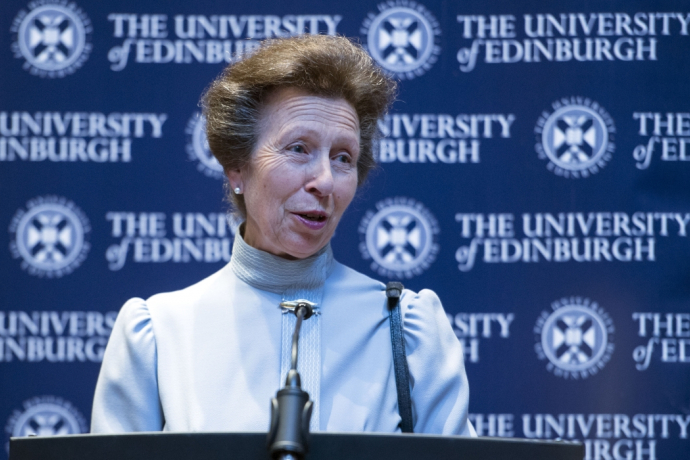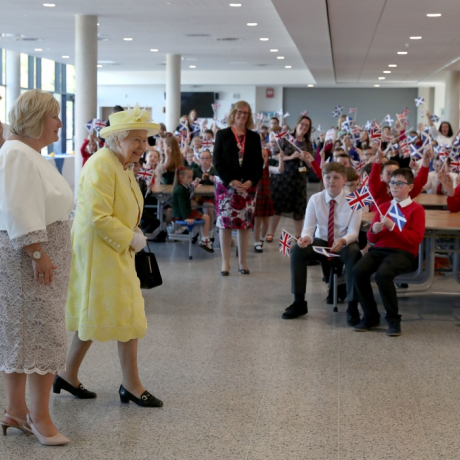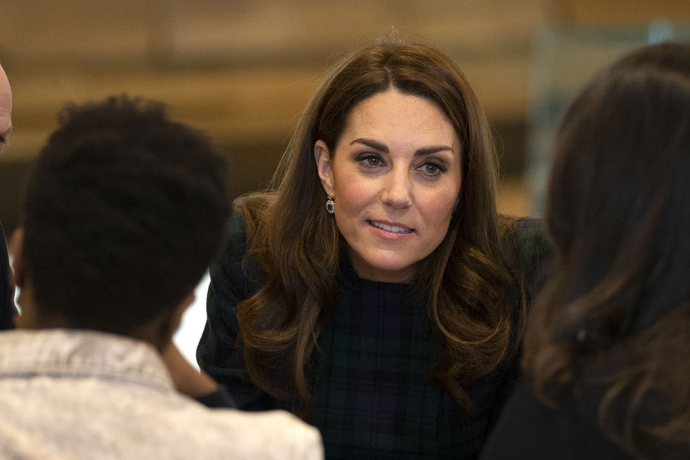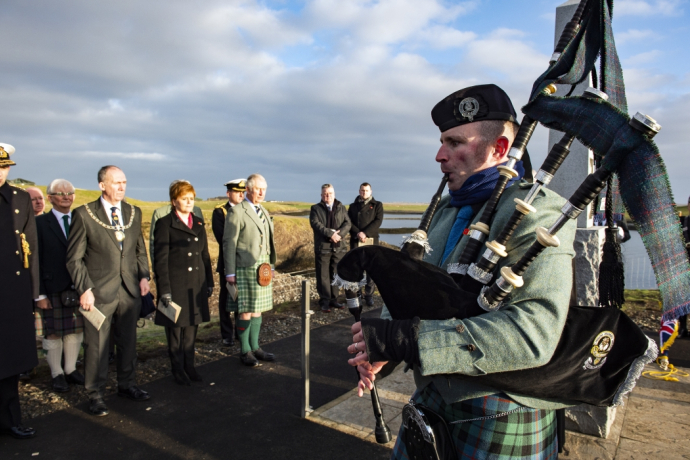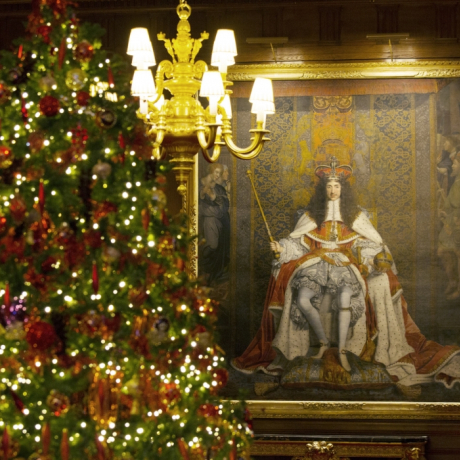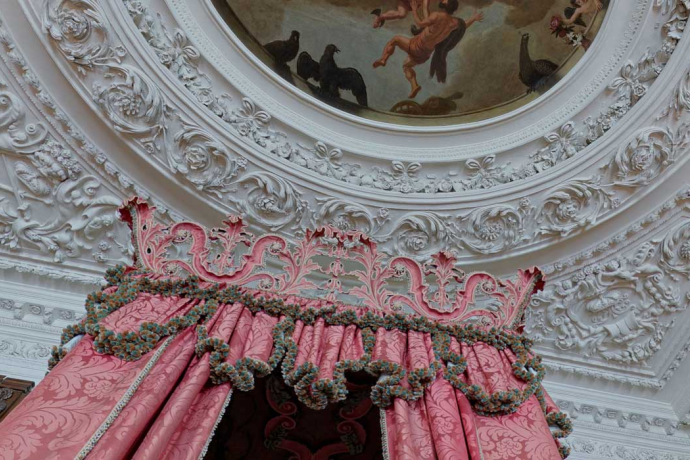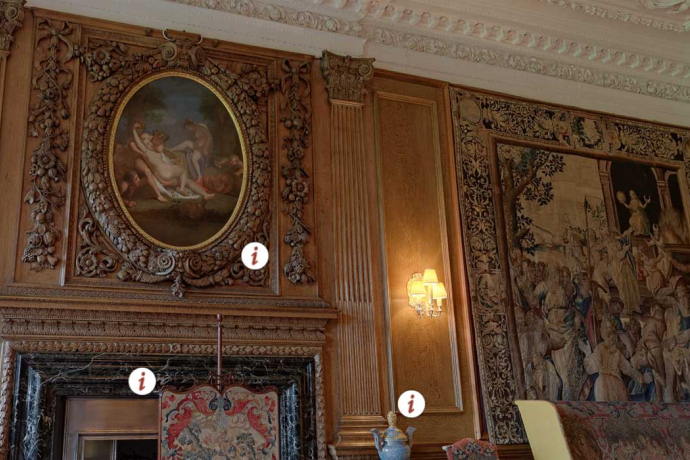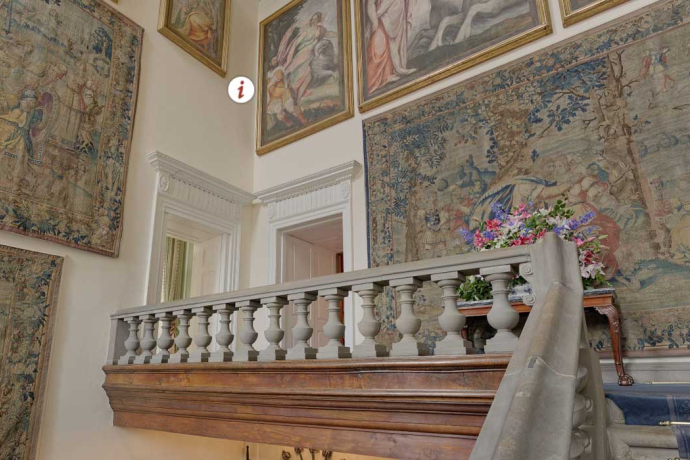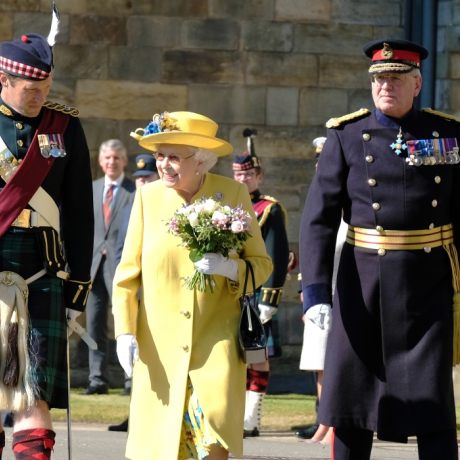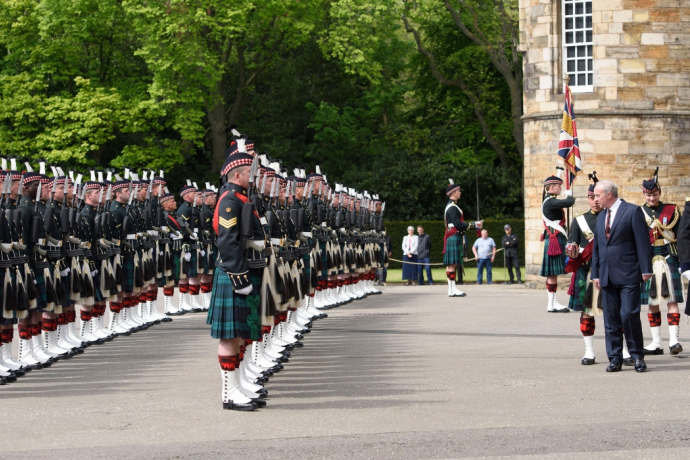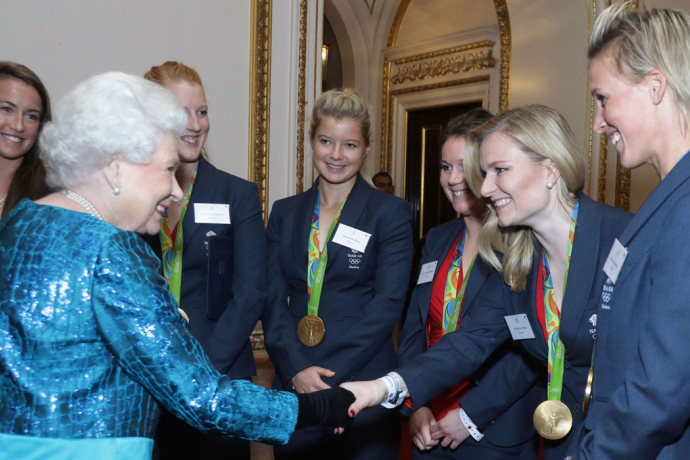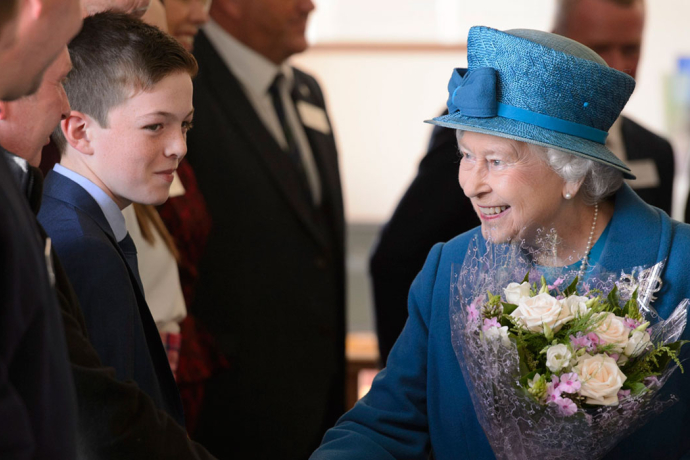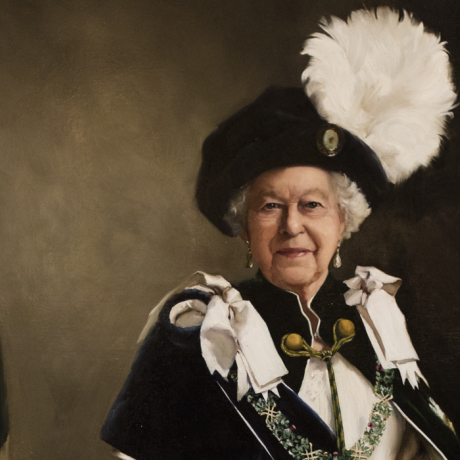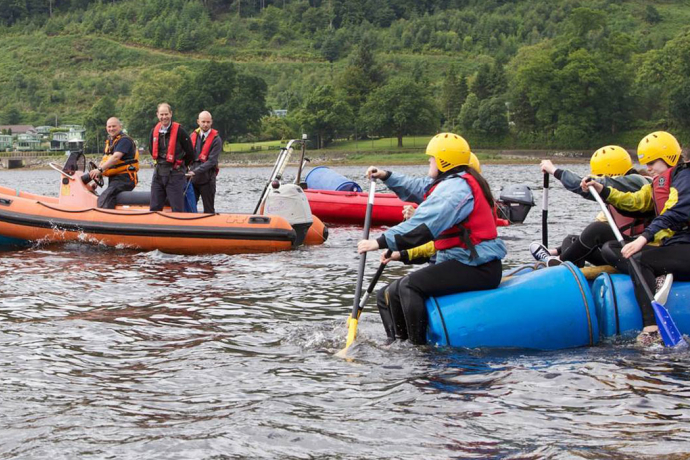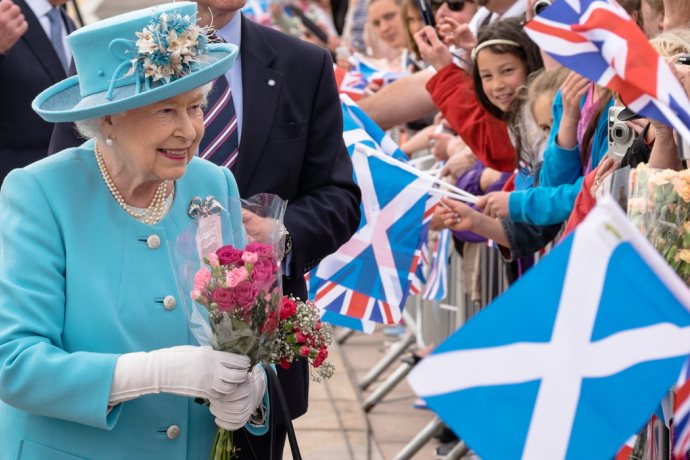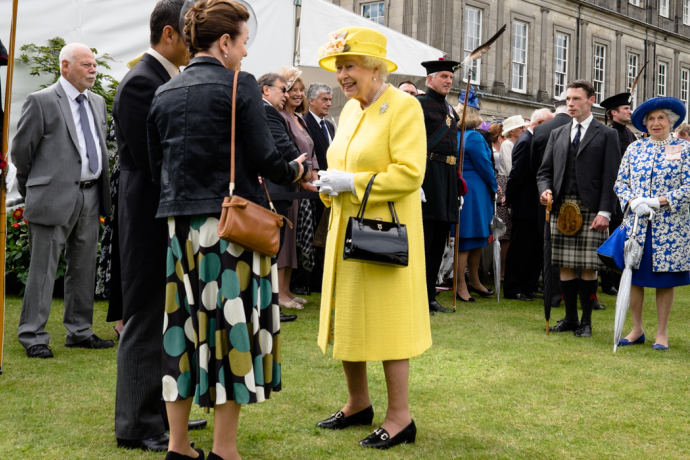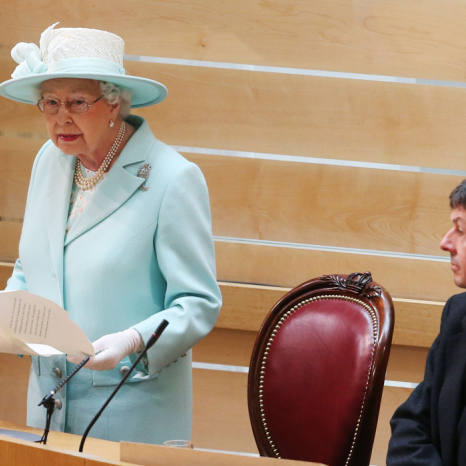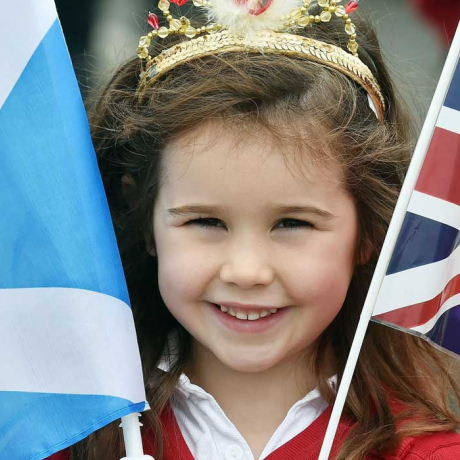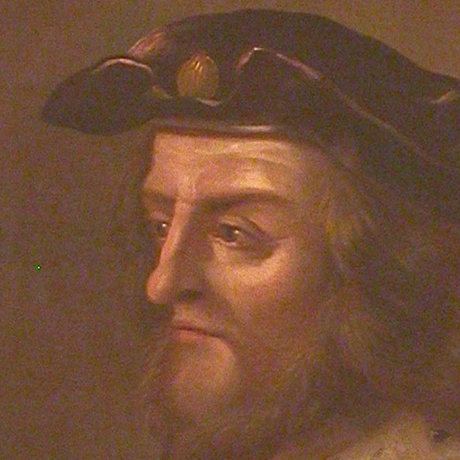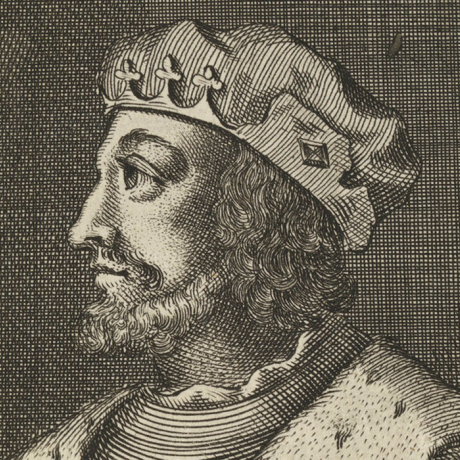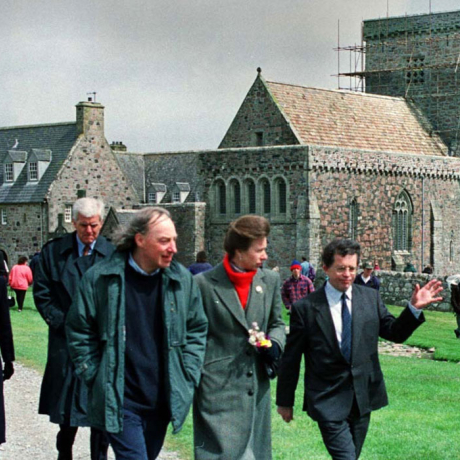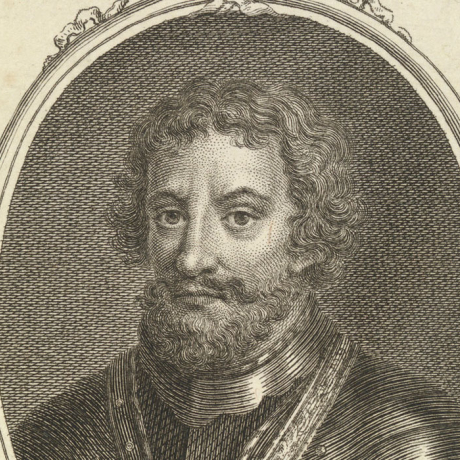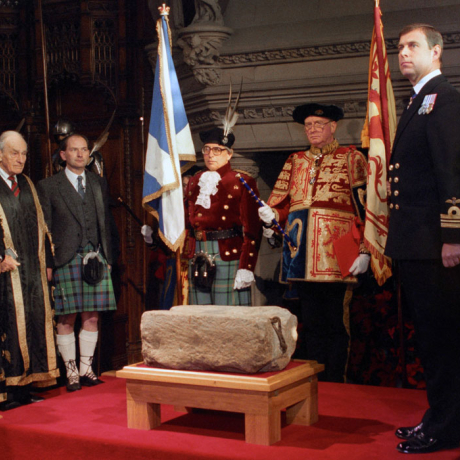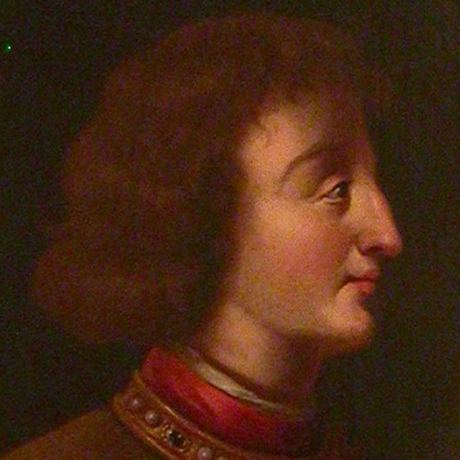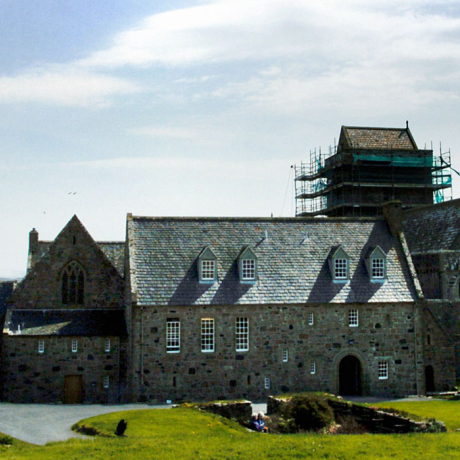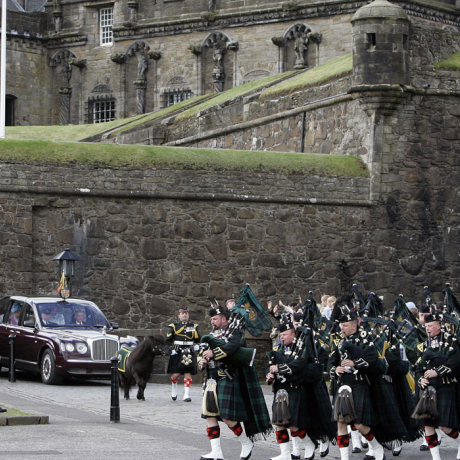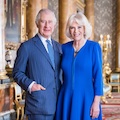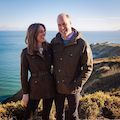The Palace of Holyroodhouse today
Today the Palace of Holyroodhouse is used as a Royal Palace, but is also open to the public all year round. It also is a centrepoint for celebrating the best of Scotland.
This is most evident in the Monarch’s ‘Holyrood Week’ of engagements, undertaken every year from the end of June to the beginning of July. His Majesty attends several engagements to celebrate Scottish culture, history and achievement.
The Investiture held in the Great Gallery is for Scottish residents whose achievements have been recognised in the twice-yearly Honours List which appears at New Year and on The King's Official Birthday in June.
King George V and Queen Mary held the first garden party in the grounds of Holyroodhouse and the tradition has been maintained to the present day. Each year, members of The Royal Family entertain around 8,000 guests from all walks of Scottish life during Holyrood week.
History of the Palace of Holyroodhouse
David I founded the Palace of Holyroodhouse as an Augustinian monastery in 1128. The Abbey prospered. With Edinburgh now recognised as Scotland's capital, Kings chose to live in Holyroodhouse, surrounded by parkland, rather than in the bleak Castle, high on a rock overlooking the town and exposed to the elements.
In 1501 James IV cleared the ground close to the Abbey and built a Palace for himself and his bride, Margaret Tudor – the sister of Henry VIII. Only a fragment of the gatehouse survives today. His successor James V added a massive Tower between 1528 and 1532, and a new west front south of the Tower between 1535 and 1536.
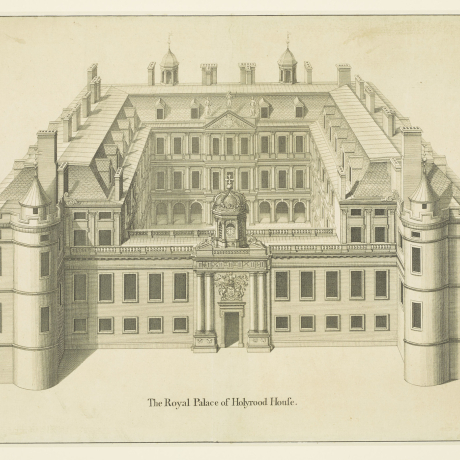
The Royal Palace of Holyrood House
View on the Royal Collection websiteMary, Queen of Scots spent most of her turbulent life in the Palace - a dramatic and often tragic chapter in the history of the building. She married two of her husbands in the palace. Her private secretary David Rizzio was murdered in her private apartments by a group led by her husband Lord Darnley, who was jealous of Rizzio's influence over Mary.
Further renovation was carried out in 1633 to mark the Scottish coronation of James's son Charles I. During the Civil War Oliver Cromwell's troops were billeted at the Palace.
Virtual tours are temporarily unavailable.
Charles II was crowned in Scotland in 1651. Although he never returned there, he initiated a substantial rebuilding of Holyroodhouse in the 1670s and the palace was transformed by the Scottish architect, Sir William Bruce. A tower was added to the right, to form a symmetrical façade, and new Royal Apartments were created in a sequence of richly decorated rooms, with sumptuous plasterwork ceilings, arranged around a classical-style quadrangle’.
In the twentieth century, King George V and Queen Mary continued restoration and renovation work on the Palace, which they regarded as a family home. They were instrumental in bringing Holyroodhouse into the twentieth century, installing bathrooms, electricity and lifts. They also began the tradition of Garden Parties being held at the Palace.
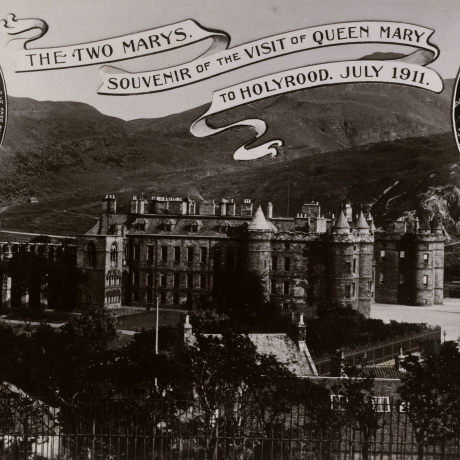
Souvenir of the visit of Queen Mary to Holyrood
View on the Royal Collection websiteHowever, the smooth running of the Palace today owes much to the foresight of an earlier predecessor, Charles II, who built the spacious upper floor where the Royal Family's private apartments are situated.
The Palace of Holyroodhouse has now been home to royalty for over 500 years, and is still the official residence of The King in Scotland.
Visiting The Queen's Gallery, Palace of Holyroodhouse
The Queen’s Gallery at the Palace of Holyroodhouse holds exhibitions displaying works from the Royal Collection and beyond to members of the public. Find out more about visiting the Gallery on the Royal Collection Trust website.
Visiting the Palace of Holyroodhouse
The Palace of Holyroodhouse is open to the public all year round. Find out more about visiting the Palace on the Royal Collection Trust website.

